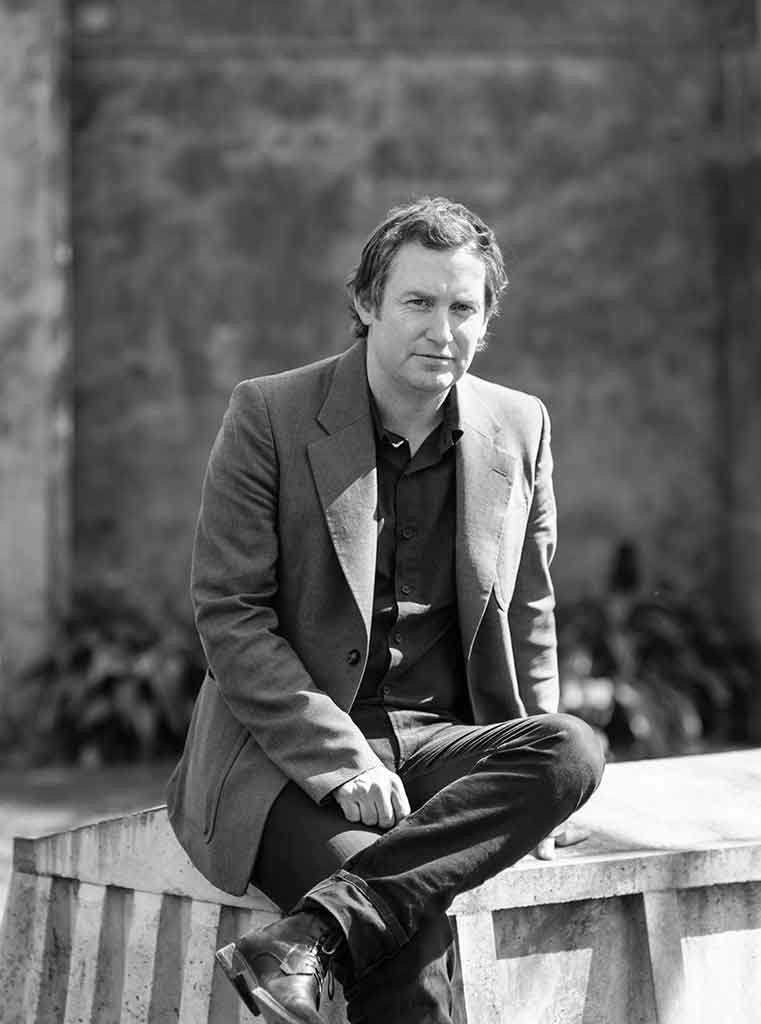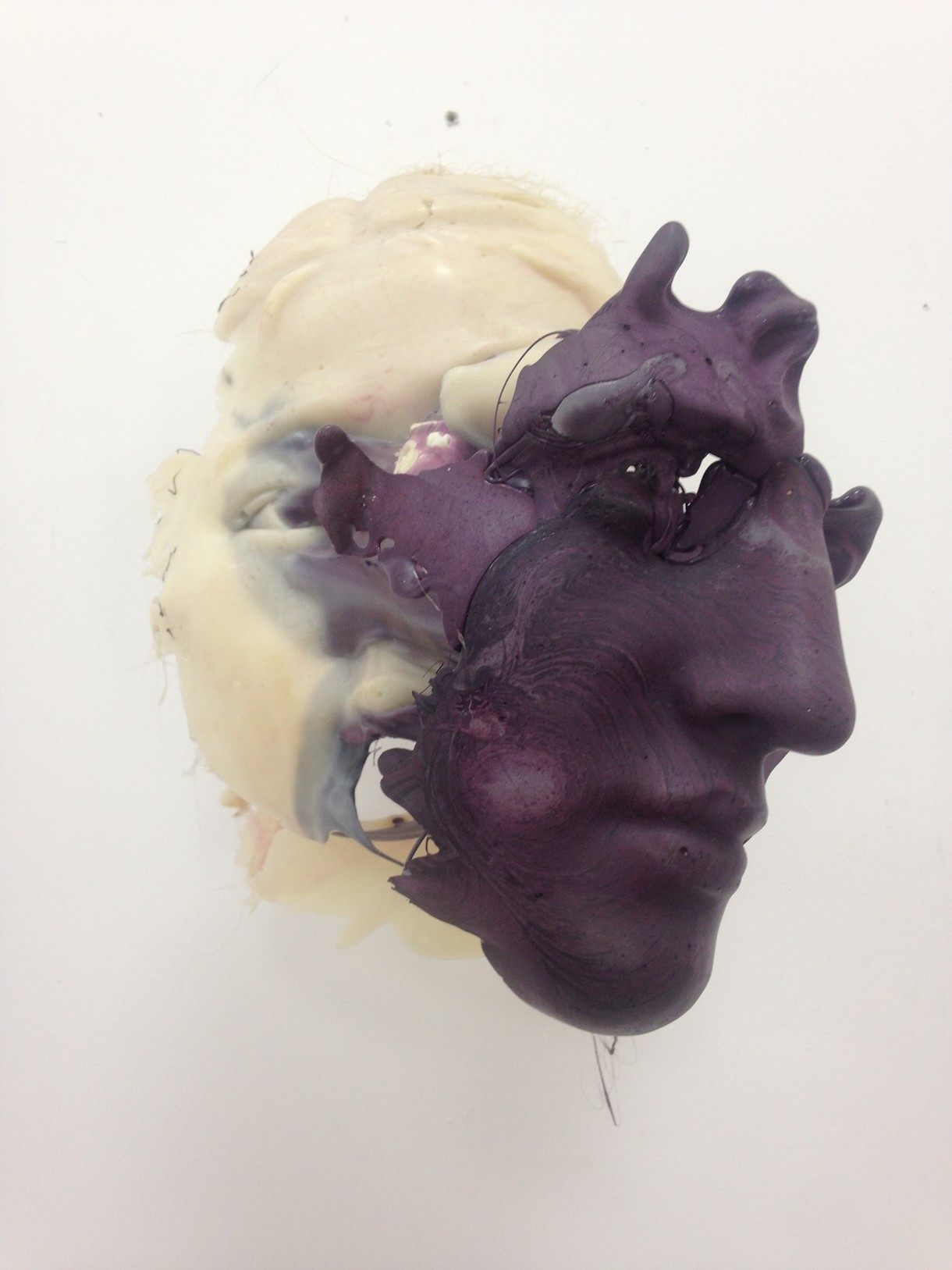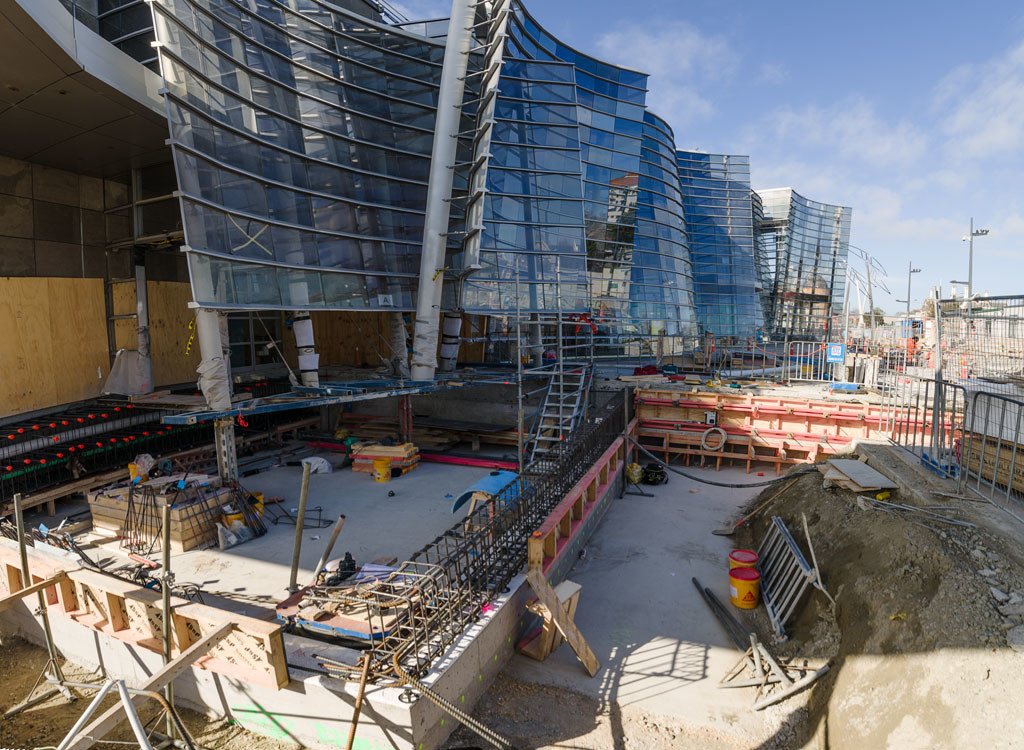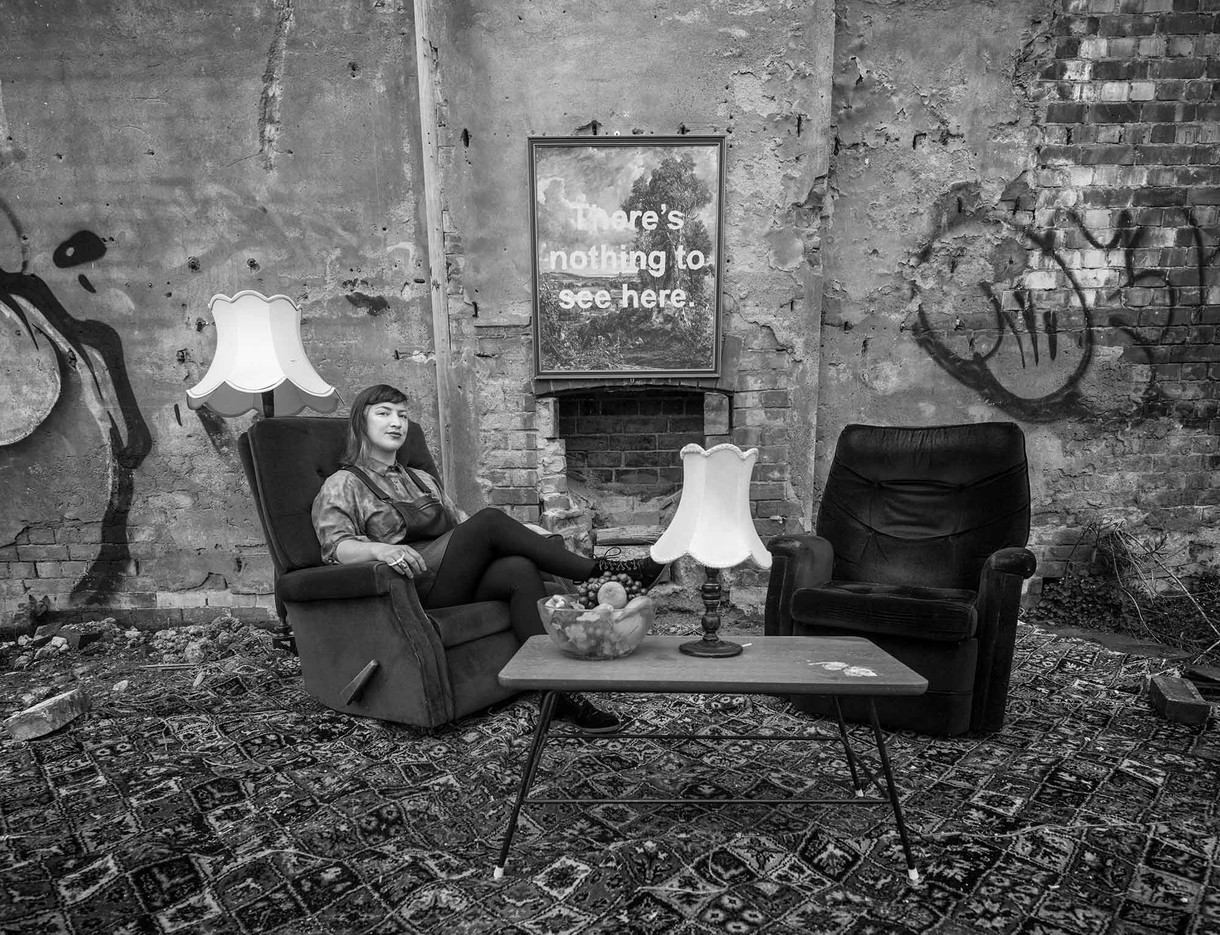Stakes in the ground
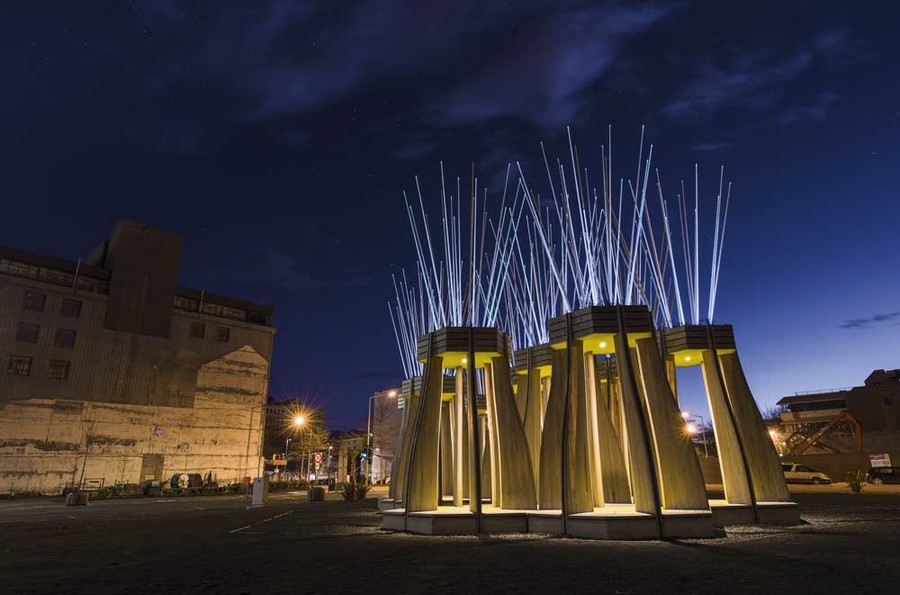
Julia Morison Tree Houses for Swamp Dwellers 2013. Installation view. Photo: John Collie
Last, Loneliest, Loveliest is New Zealand's first official presence at the International Architecture Exhibition La Biennale di Venezia, and takes its alliterative title from Rudyard Kipling's poem, 'The Song of the Cities', which gives four lines each to various cities from the British Empire, including Auckland:
Last, loneliest, loveliest, exquisite, apart–
On us, on us the unswerving season smiles,
Who wonder 'mid our fern why men depart
To seek the Happy Isles!
This country's presence at the Biennale (which runs until 23 November) was initiated by the New Zealand Institute of Architects, the result of a winning submission led by David Mitchell, and brings a distinctive Pacific voice to the event. Biennale director Rem Koolhaas's specified theme is Absorbing Modernity: 1914–2014, which New Zealand Pavilion commissioner Tony van Raat saw as inviting architects to 'consider the impact of globalisation on the evolution of architecture in their countries. ... to consider how the architectural forms and elements they employ are connected to a history, and, by implication, how they may have evolved either in conformity with or in contradiction to that history.'
Through their exhibition Mitchell and his team propose a lineage for New Zealand architecture that connects the conceptual and practical aspects of Polynesian structures, nautical as well as architectural, to local modernist and contemporary architecture. In doing so they offer a possible framework upon which to continue recognising and strengthening an identifiably home-grown, Pacific architectural character. The New Zealand Pavilion's poetic title, together with Mitchell and his team being strongly Auckland-based, makes it tempting to see the Venice presentation as an Auckland-centric affair. Hearteningly, however, the picture presented is broad enough to bring other centres into the discussion, including Christchurch, at least partly due to its vast present architectural need – and uncertainty around how that will be answered.
This Pacific approach clearly works for Auckland, a decidedly multicultural and Polynesian city. Within Last, Loneliest, Loveliest, architecture connecting to Pacific traditions is presented as an ideal; relevant for its characteristic structural soundness and resultant formal elegance, and its appropriateness through originating from and resonating within this part of the world. In the argument presented, with an emphasis on Pacific/New Zealand qualities of structural honesty and an essentially practical approach, Christchurch examples cited include Sir Miles Warren's Dorset Street Flats (1957) and Peter Beaven's (sadly recently demolished) Lyttelton Road Tunnel Administration Building (1964). A vital ingredient in the conversation is a rare recent moment of innovation and architectural quality for this city, in Shigeru Ban's Cardboard Cathedral (2013) – a building that at least in theory should lift the game for the possibilities that now exist. Such buildings are linked by discussion of 'the pragmatic tradition', which Mitchell asserts 'is very strong among New Zealand architects':
Showing how you make buildings is a big thing here, and the explicitness of making is also a defining characteristic of Pacific architecture. The simplest buildings in the Pacific, which are made of logs or bamboo and lashing, are very clear in their assembly. Of course, legibility was also important to the New Brutalists in Britain, and you can see their influence in the work of Sir Miles Warren in Christchurch in the 1960s. Miles made a great play of how he put his buildings together, articulating every joint, which is a fabricator's way of looking at architecture.1
To the question of whether there is room for a Pacific tradition in the response to the rebuild of the city of Christchurch, he responds:
It's already happening, even if it wasn't planned. Seismic theory has a big influence. Elements of multi-storey timber-framed buildings are being tested at the University of Canterbury, and built in Christchurch and elsewhere. These buildings aim to be more resilient than concrete buildings – they can bounce back after an earthquake deforms them. Some use post-tensioned beams, which have pre-stressed cables threaded through them or below them. You can see the principle in a little wooden tower we have modelled in our Biennale pavilion. It's not far removed from the lashed beam-and-post joints of Pacific buildings, which flex without collapsing.
The fundamentals of Pacific architecture are lightness and flexibility, in a manner that usually includes posts, beams, and infill panels under big roofs. The Christchurch earthquake has given new importance to light, flexible structures, and this may help keep the Pacific way alive.2
On the ground, beyond the well-developed discussion presented in Venice on the merits of traditional and recent Pacific architectural forms, it might be asked how much of this will genuinely impact on the new Christchurch. I feel a level of skepticism seems necessary. The plans and buildings now starting to appear, coupled with a loss of heritage architecture that still confounds, seem to point towards a city to come that will be temporarily shiny and new, but overwhelmingly ordinary.
Take Shigeru Ban's inspired work out of the picture: together the new arrivals and proposals suggest an incoming tide of corporate blandness, a tsunami of grey and brown, lacking not only the excitement of colour but also of poetry, depth or enduring inspiration. All of this, it is quietly assumed,
is to be excused by a mindset claiming tough economic reality as the regrettable, but overriding, consideration. But what is not evident is architecture striving to the level of art. Is the art idea one that developers, owners and planners together can actually see, let alone achieve?
This may be harsh. It also may be pissing into the wind. But there does seem a plainly missing ingredient. Stake in the ground: there are conversations that should be had, conversations with serious artists who are willing to become involved. This could be about breaking out of the box and beyond traditional, pragmatic (even culturally relevant) trajectories to investigate possibilities that will enrich a common quality of life. And the artists able to do this – experienced and diverse – would be open to considering invitations to become temporary working members of architectural building teams. Such relationships would absolutely bring exciting results. Architects should not feel diminished or threatened by this flag being waved, or by the thought that art practitioners are some of those in our society best suited to looking and thinking beyond where most are capable of seeing; they own skills that could be respected and sought out. The things most clearly lacking in the city that we begin to see are character, personality, individuality and imaginative power. Bringing artists into conversations with architects – early – to construct genuine dialogue would allow things to happen that have not been seen or done, delivering interesting and memorable results that would go a long way beyond foyer art. Structural honesty and a Pacific approach should be pursued and admired, and economic realities should be carefully addressed, but this is an additional conversation waiting to happen, connected to a wide open opportunity that exists and should be seen. Is anyone ready to start?
Ken Hall
Curator
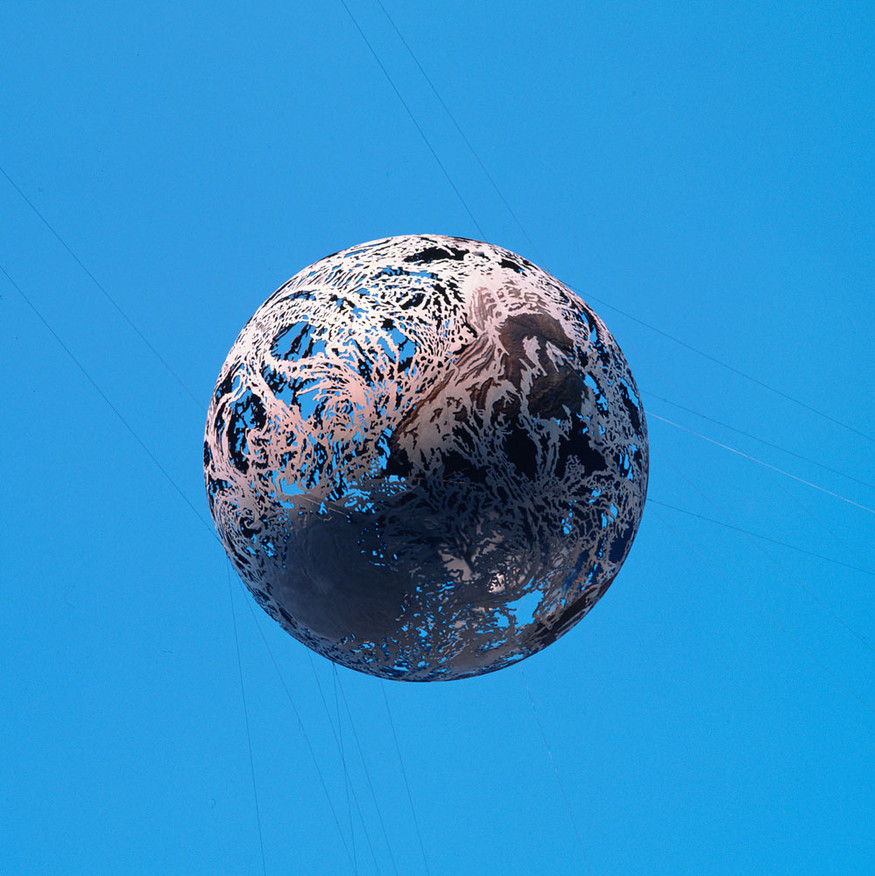
Neil Dawson Globe 1989. Musee National d'Art Moderne, Paris, France. Photo: Bill Nichol
It seems reasonable to assert that if artists are to be involved with building projects, they should be an integral part of a design team, invited to participate at the genesis of a project as requisite professional consultants. The value in involving artists in public projects is that they have ways of connecting to our intellectual and emotional attachment to the city and land, and the ability to respond in ways that authentically crystallise a crucial time and place in our history. Original and adventurous public artworks can be of considerable value to architectural developments within this city. Christchurch has the opportunity to bring the best in the world of design to what remains an extraordinary, unparalleled moment; a period in time that we are still at the edge of.
—NEIL DAWSON
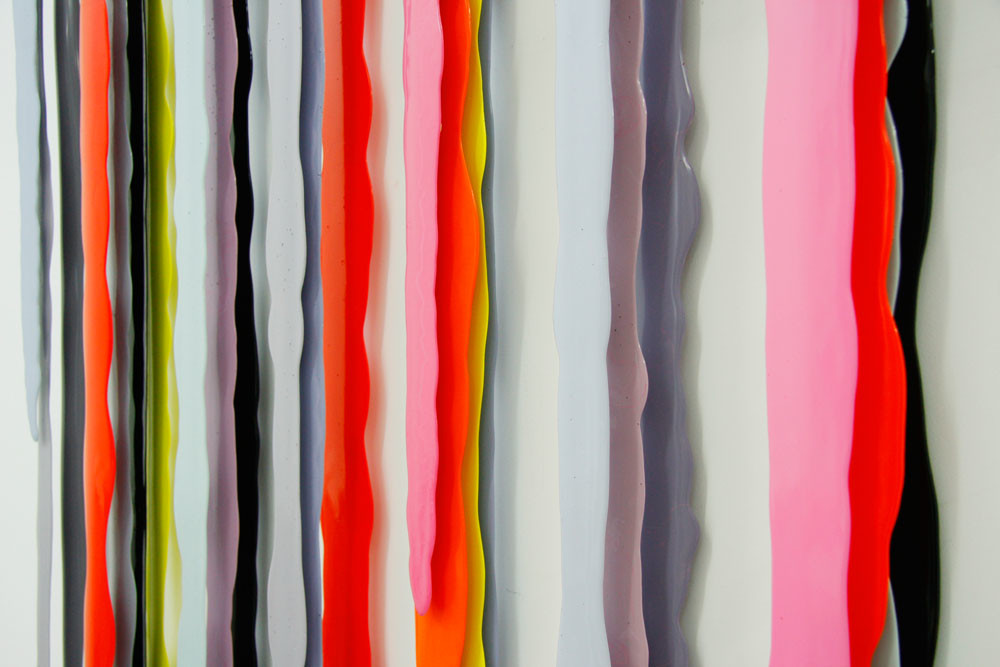
Helen Calder 6/21 (detail) 2011. Twenty-one acrylicpaint skins and six stainless steel pins. Courtesy of Trish Clark Gallery
The inclusion of artworks, like colour, is too often treated as an afterthought, or as mere decoration. One of the most vital aspects of creating spaces for people involves colour and light. In Christchurch right now there is an opportunity to make colour and light an integral part of the architecture and environment by working collaboratively with contemporary artists early on in the planning stages.
Christchurch's unique position presents the possibility of an integrated art and architecture that embraces a broad palette of materials, forms, textures and colours – one that more clearly reflects the diversity of culture in twenty-first-century New Zealand.
—HELEN CALDER
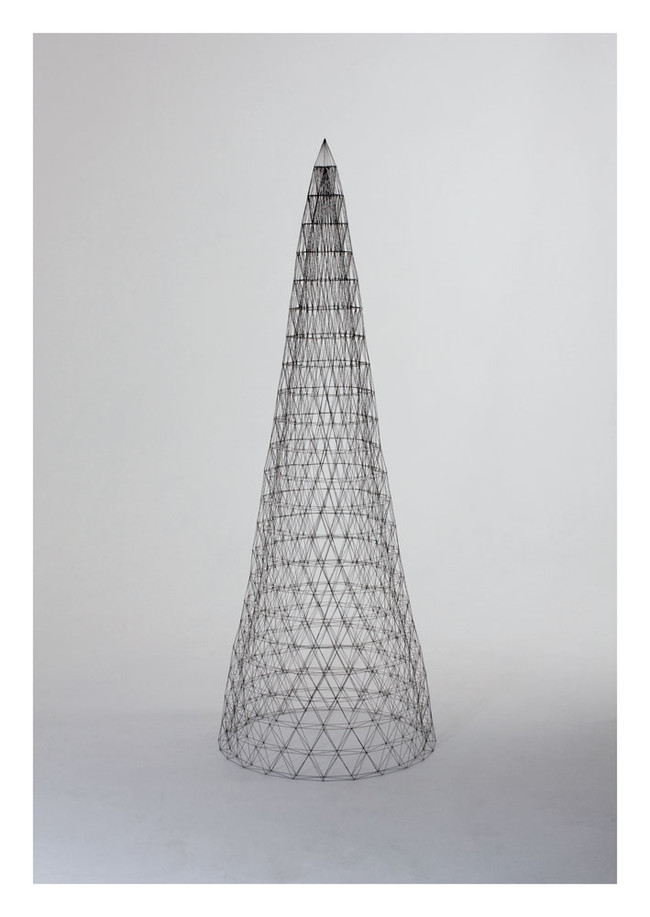
Peter Trevelyan Hyperboloid 2012.0.5mm graphite, MDF plinth,Perspex case
In the art world it still possible to hear talk of the 'avant-garde', a regrettably militaristic term, the advance guard are the people (or concepts, methods and materials) who are the first in any territory. They go before the main body, mapping and signposting. Contemporary art is (and should be) a complex and multifaceted business. However, at the risk of sounding reductionist the idea of novelty and the 'shock of the new' still has currency and value.
The majority of artists constantly seek the new, to claim or renew (for it lapses with saddening frequency) membership of this avant-garde, but are architects driven by the same goal? I would argue that while some may be, the evidence of their success is lacking. Looking around our cities, I see the influence of fashions (the avant-garde's eternal parasitic enemy), rather than invention and creativity. As Coco Chanel once said, 'fashion is for those without style'.
To be fair, I suspect few clients would favour the inherent risk and uncertainty of the avant-garde. But maybe there is more behind this lack of confidence to innovate. Perhaps understandably, establishing an identifiable style is a concern that bothers the Pākehā middle and upper classes more than the Māori and Pasifika cultures from which the signifiers of this identity are largely 'borrowed'. This identity is formed through an inventory of influences, rather than a bold advance, a triangulation from the progress of others rather than actual creation.
I doubt if this approach would result in success for a contemporary artist, how well it will serve our architects and cities is an open question.
—PETER TREVELYAN
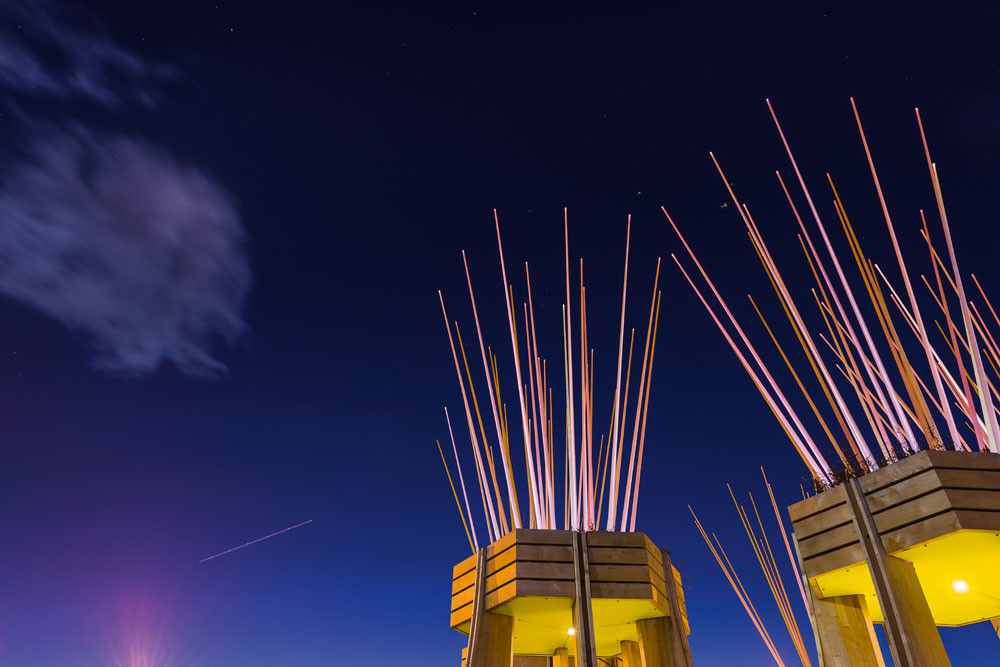
Julia Morison Tree Houses for Swamp Dwellers 2013. Installation view. Photo: John Collie
Ultimately, a commitment to risk aversion equates with lack of soul. To allow the possibility of failure or to incorporate a degree of risk is absolutely not a bad thing. The Eiffel Tower, Sydney Opera House and the Pompidou Centre were all highly controversial when being constructed. Innovation entails risk and experimentation: if anything great is to be achieved, there needs to be an element that allows possible failure as part of the equation. Risk is what the art project does and is what it's about.
—JULIA MORISON
Today there are fewer owner/occupier buildings than in the past, and therefore a greater disconnect between the building and the client. Occupying the building you're commissioning binds you to it in a way that's very visible, it becomes part of your public identity and your recognisable legacy. A lot of developers are not thinking about creating a legacy – or even connecting to that idea. The developer simply needs a return within five years. We should have a better chance with institutional and civic architecture but I'm not sure that is actually happening here.
There is also the question of the role of project managers. In the past, architects managed projects themselves. Project managers tend not to have a background in architectural design, yet are now intervening or taking the role that an architect would have had. Standing between the client and the architect, they are reducing architecture to a series of discrete components on a checklist rather than understanding it as a greater, integrated design process.
The involvement of artists would break through those particular problems – it is something that would slice through the current established relationships and perspectives and help provide an avenue for more considered design. And hopefully, beautiful buildings.
—JESSICA HALLIDAY
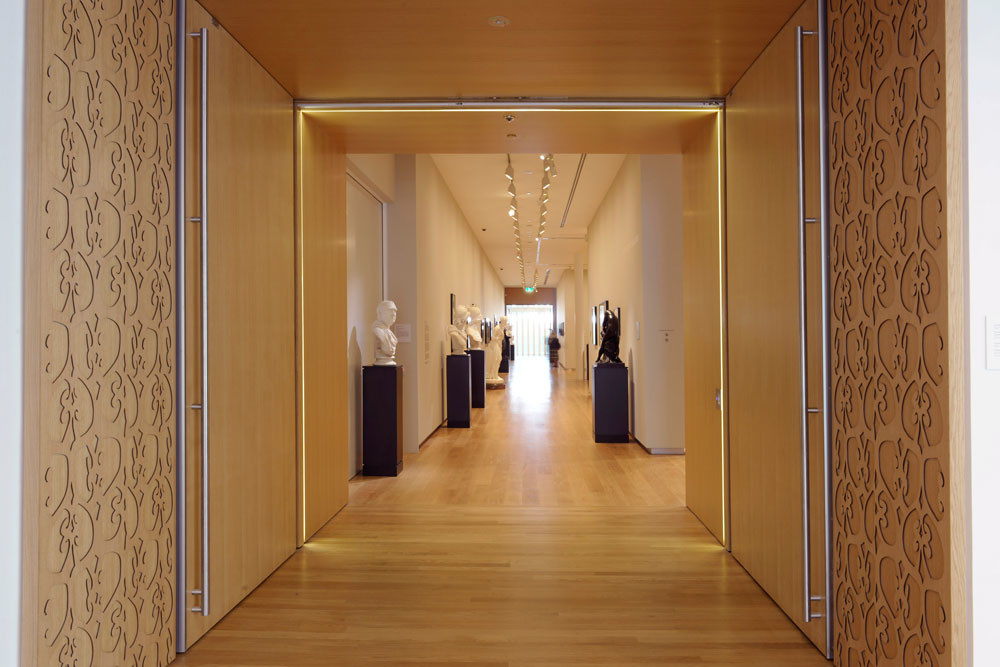
Lonnie Hutchinson Honoa Ki Te Hono Tawhiti:Te Taumata 2011. American oak. Auckland ArtGallery Toi o Tāmaki, commissioned 2010
I'm working at present on the Justice Precinct project, and there is no precise inclusion within the structure of the project that touches on the actual essence of anything Māori or from the natural world – the essential nature of the whole. My job there is to soften the edges of these sharp forms and box-like structures, and in a way that represents mana whenua and reflects their cultural identity and aspirations. I am responding to structures that have already been identified by the architects, for example with a screen that is intended to filter the light. It is something that has to function on a practical as well as visual or aesthetic level.
Preferable is a situation where the artist is able to work with a concept that filters right down through the brief; where art finds a stronger sense of integration into the building. It is spoken of in terms of the art functioning or existing within the artist's broader body of work. So what can artist involvement bring? Artists come up with concepts that are quite 'out there' – new ways of looking at how a space can be enhanced (though sometimes spaces don't need to be enhanced). Artists will also ask a lot of questions that maybe other people wouldn't ask, including ideas around how you occupy the space, the history of the site and surrounding environment, and contemporary culture and aesthetics. A building might work today, but it also has to work in the future.
I strongly believe that public architecture should reflect and inspire the socio/cultural environment in dynamic new and meaningful ways, forever evolving as culture does. My role as the artist is to try and make sense of it all and develop concepts for specific identified areas, and work with the identified materials in the build. The artist in this situation has to conceptualise works that integrate into the architecture (and that has its own unique set of rules) and meet the aspirations of mana whenua as well as the client.
—LONNIE HUTCHINSON
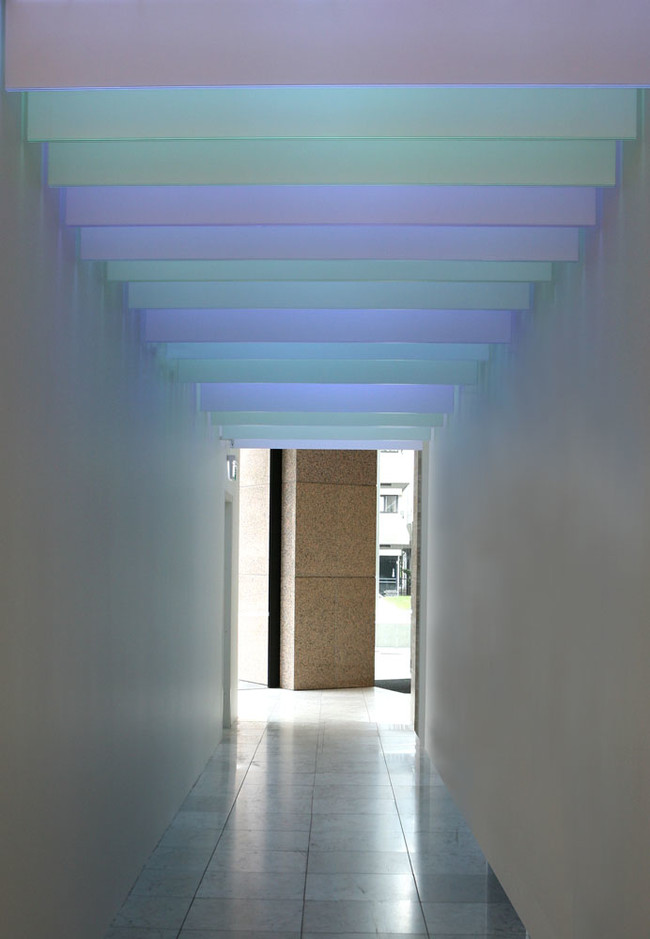
Sara Hughes Wintergarden 2013. Computerprogrammed light and Plexiglas, ANZ tower lobby,Auckland
I have worked with a number of architects on projects in New Zealand and Australia, but the most successful and fulfilling of these were the ones where I was involved early on. This allowed more input from an artist's perspective on how visual and conceptual ideas could operate within the architectural space; it is always a balance to create works that feel a part of the fabric of the building yet add a new dimension or experience to it. For an artist, being involved early offers many more possibilities than 'sticking an artwork on' when the building is complete. I would welcome a truly collaborative approach to new urban design in Christchurch. Egos and history aside, I believe there are artists and architects who would be excited by such dialogue. It is clients who see the value in such collaboration that are needed.
—SARA HUGHES








